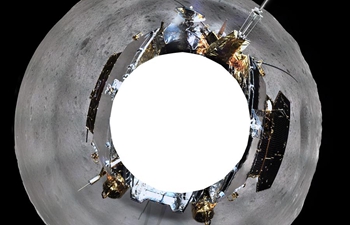WASHINGTON, Jan. 16 (Xinhua) -- The U.S. Federal Reserve (Fed) said on Wednesday that the nation saw "modest to moderate" growth from December to January, while companies became less optimistic due to multiple downside risks.
The "Beige Book," a periodic economic snapshot released by the Fed, contained economic reports from 12 federal reserve districts, each monitored by a regional federal reserve bank.
"Outlooks generally remained positive, but many districts reported that contacts had become less optimistic in response to increased financial market volatility, rising short-term interest rates, falling energy prices, and elevated trade and political uncertainty," the Fed wrote in the report.
The Fed said the majority of districts reported that manufacturing expanded with a slower pace of growth, especially in the auto and energy sectors. Meanwhile, the growth of nonfinancial services sector and energy sector also cooled down in some fed districts.
Speaking of the employment status and price level, two key factors to decide monetary policy, the Fed noted that "firms were struggling to find workers at any skill level" in U.S. labor markets, while input prices rose in the majority of districts.
"Reports often cited rising materials and freight prices as sources of cost increases, and a number of districts said that higher tariffs were also a factor," the Fed said.
Theoretically, a tight labor market and rising price level could urge Fed officials to keep raising short-term interest rates to avoid an overheated economy. However, recent remarks made by top Fed policymakers sent more dovish signals on future rate hikes.
"We're in a place where we can be patient and flexible and wait and see what does evolve," Jerome H. Powell, chairman of the Fed, said during an interview at the Economic Club of Washington D.C. on Jan. 10.
The Fed had lowered the growth forecast of the U.S. economy to 2.3 percent during the latest rate hike in December. The World Bank, an international financial institution, also expected that the growth rate of the U.S. economy would drop to 2.5 percent in 2019.
The central bank lowered its projections on the number of rate hikes in 2019 from three to two during the latest rate hike announcement in December.













